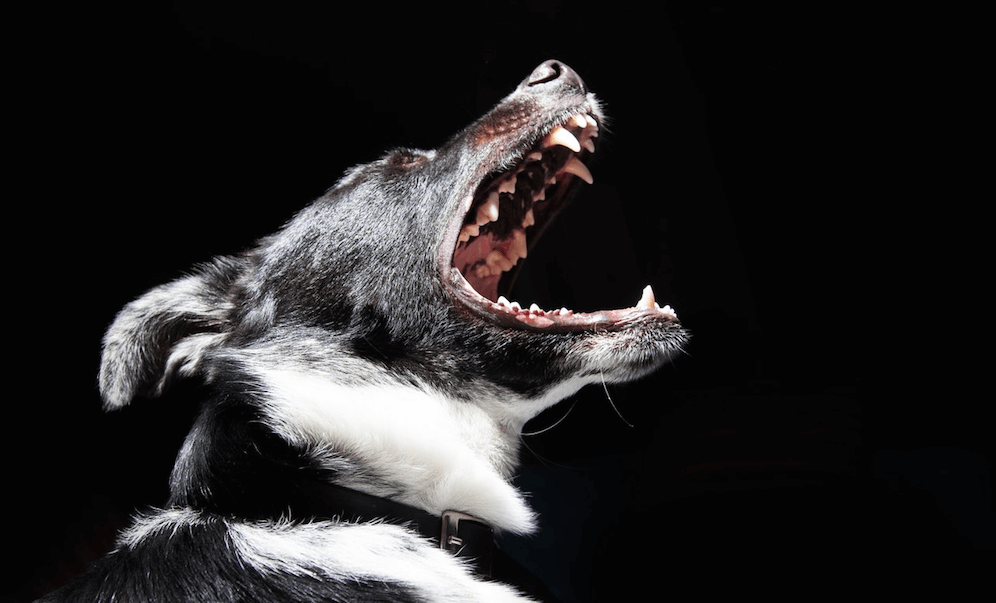Stress, aggression and separation anxiety are perhaps three of the most common canine behaviours professionals in the pet industry might encounter.
Yet while our canine friends can’t verbalise their feelings, they are able to communicate their emotions through non-verbal behaviour. Recognising facial signals, posture cues and behavioural indicators is vital for understanding and managing difficult dog behaviours.
Signs a dog in your care is stressed
There are myriad factors that can cause a dog to stress, but a trip to the vet would certainly be a widespread reason, along with fear of separation from their owner and changes in environment.
Some key indicators of canine stress include:
- Appeasement signals—moving slowly, lip licking, turning the head away and averting eyes
- Low body posture—cowering and skulking can indicate stress and unease
- Restlessness
- Hyperactivity—frenzied behaviour and restlessness
- Pinned back ears
- Shaking or trembling
- Digestive upset—vomiting and/or diarrhoea
Dr Jo Righetti, animal behaviourist and founder of Pet Problems Solved, advises, “Stressed dogs need to be managed carefully. If possible pet professionals should try to alleviate or prevent stressful situations from occurring in the first place.
“As soon as an event occurs and you realise the animal is stressed, you should remove them from the situation quickly. Ongoing stress may create anxiety, which can result in many negatives for a dog including illness, phobias and aggression, for instance.
“If a dog is sensitive to a particular event or encounter, for example, noise, thunderstorms or children, then the dog needs to be desensitised over the long term. This means gradual, careful positive introductions to the event that they are sensitive to. It may be useful to suggest your customer or client seek the help of a behaviourist or trainer to start this procedure off.
“If a dog is extremely stressed, then you might talk to the owner about the option of using veterinary medication to help the dog. Once on medication a dog may be better able to learn new behaviours. Pheromones like Adaptil may help too.”

Separation anxiety and how to solve it
Whether you’re a pet sitter, vet or kennel owner, you’re sure to have experienced a dog with separation anxiety. According to Jo, “Separation anxiety is a common issue for pets – especially dogs.”
Some key signals of separation anxiety include:
- Barking, howling and whining
- Escaping and roaming
- Scratching at gates and/or pacing at the doors
- Chewing, digging and other destructive behaviour
Dionna Newton, animal behaviourist at Animal Behaviour Australia, explains, “Separation Anxiety is an acute physiological stress response (a panic response) which can occur when the dog is separated from their owner or left on their own. A dog may become very distressed. They may salivate, bark, howl, pace, urinate or defecate indoors, perform destructive behaviours in the home or garden, try to escape and can even self-harm. These behaviours do not occur when the owner is at home.”
To help address this issue Jo suggests asking the pet’s owner to leave a blanket or item of clothing that smells of them, playing calming music and engaging the dog in a positive activity—such as playing with a food-releasing toy.
“Suggest that the pet owner try to spend some time away from their pet, gradually building up the length of time spent apart.
“If all else fails, a vet can prescribe medication which should be used in conjunction with behavioural therapy.”
Other anxiety-related issues
“85% of dog cases coming through to Animal Behaviour Australia are anxiety related. The main advice that professionals in the pet industry need to give pet owners is, they that can resolve behaviour issues in their pets, no matter how major or minor. An animal behaviourist will help them resolve the issue and provide fun motivating solutions,” says Dionna.
“Anxiety may result from a lack of social skills, inappropriate socialisation, previous negative experiences, or be influenced by a dog’s genetics. Owners sometimes reinforce anxious behaviours in their dog too without realising that they are making matters worse.
“It is necessary to treat underlying anxiety if we are to address or prevent anxious responses to any specific situation, such as a trip to the vets, whilst on a walk or whilst the pet is being cared for by a sitter.
“Anxious dogs will, in general, try two things to ward off feelings of anxiousness. They’ll try to retreat (which can be difficult if on a leash), and if not possible, may then act in a defensive, aggressive manner. Very anxious dogs can skip straight to aggression as a solution or protection mechanism.
“The behaviours that anxious dogs exhibit help them to avoid or deter what they perceive to be a threat and therefore the behaviours are reinforced and are often repeated. For example, an anxious dog that growls menacingly at an approaching person whilst on a walk is likely to stop that person in their tracks. The person stops approaching, the dog’s anxiety stops increasing and it feels to the dog like their behaviour has helped and so they’ll keep growling in future, similar situations.
“What usually also happens when a dog performs its defensive behaviour is the owner says either a stern ‘no’ or a soothing ‘it’s okay’. In the dog’s mind, the owner has now acknowledged the perceived threat, which can then reinforce the dog’s behaviour even more!”
Dionna explains that an animal behavioursit can create a ‘Desensitisation and Counter-Conditioning Plan,’ which is specific to the dog’s anxieties. The plan outlines a process to identify and overcome the dog’s anxiety in a structured, controlled and positive way.
Dealing with an aggressive dog
While there can be various causes of canine aggression, a few possible reasons include nervousness, perceived threat, pain, an underlying medical problem or a previous traumatising event.
It’s important for pet professionals to communicate with owners and encourage them to let them know if they feel there’s the chance their dog could become aggressive.
Jo says, “It is such a common scenario that pet professionals won’t judge or have a negative response to hearing an animal has a tendency to become aggressive.
“However, the knowledge that a dog could become aggressive will help keep you safe when handling it.”
She says that in the case of vets, if a client’s dog becomes aggressive, they can suggest the owner begin a process of desensitising their dog.
“This might include taking the dog to the clinic door (or further up the street, if they are likely to react) and praising their calm behaviour or rewarding with a treat.
“This should be repeated a few times before the dog is finally taken inside the clinic. Once inside, the owner should give their dog a treat and next time the clinic staff can offer a treat.
“Ideally the dog will visit the veterinary clinic may times without anything invasive being done. Over time, the dog should realise the clinic visits can be pleasant experiences,” explains Jo.
“If this is too difficult for the client, a home vet visit from may be a less stressful option.”
She adds, “Dogs that are aggressive when outdoors need to be managed very carefully.
“If you’re a dog handler you must ensure that the dog does not get into close encounters with the object of their likely aggression.
“Collars and leads or harnesses are essential and even a muzzle may be required. Leads and collars are available to alert other people to your dog’s situation—for example, having “Nervous dog” written on the lead. An owner’s (or pet professional’s) duty of care would be to tell any approaching ‘threat’ that your dog should be left alone.
“Walking the dog in different locations or at different times of the day may help manage the situation, but the long term solution would be to get some help in conducting neutral introductions so that the dog is less stressed or has less need to become aggressive.”
As pet professionals it is vital to be able to read a dog’s behaviour cues through recognising facial expressions, head and body movements. This skill will assist in identifying a potential situation and taking action to resolve it before damage or injury (emotional and physical) is caused to the dog or a human.
Of course if things do go wrong, you want to make sure you have the right insurance in place so that claims are covered. Pet Professional Insurance has a range of options for you, but in the first instance you may want to consider Professional Indemnity Insurance which will cover you in the event that a customer, supplier or member of the public gets injured due to your business activities.
Latest posts by Liz Walden (see all)
- Pet health: Medicinal cannabis for pets - December 27, 2021
- What pet business insurance do I need? - November 17, 2021
- Pet sitters: how to take time off - November 15, 2021











Leave A Comment